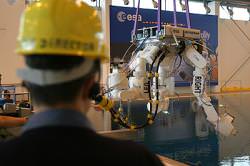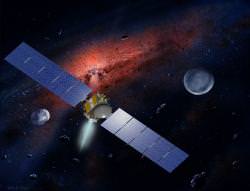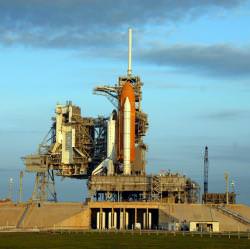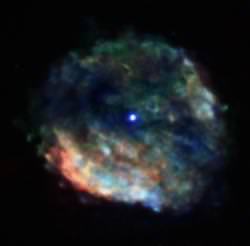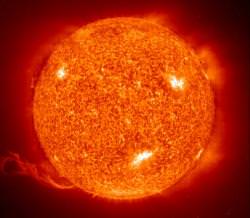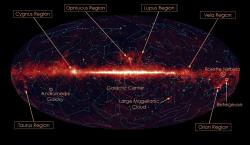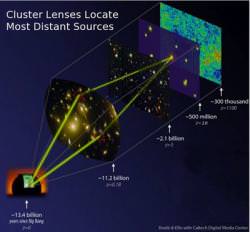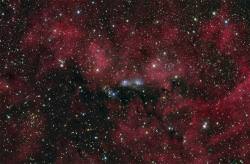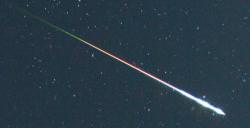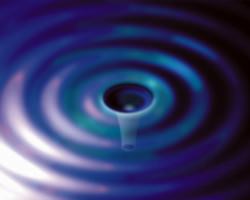Normally I wouldn’t bring this kind of thing to your attention, but this is just the craziest thing: meet Eurobot. The photo attached to this story really doesn’t do it justice. You’ve got to check out the original ESA news release, with a video of Eurobot crawling around a mockup of a space station. It’s hypnotic.
All right, I’m getting ahead of myself. Time for details.
Eurobot is a multi-jointed, three-armed robot being developed by ESA. At some point down the road, it’ll be lofted to the International Space Station, where it’ll crawl around the exterior of the station performing various fix-it jobs; the dangerous and mundane stuff currently done by humans.
Although astronauts will still be needed to complete extravehicular spacewalks, an assistant like Eurobot could do the initial preparatory work, transfer tools and equipment, and help clean up when the work’s done. There’s a shortage of astronaut time, so any way to make the job run more efficiently would be greatly appreciated.
So this week, a prototype robotic assistant was tested out in a weightless environment. Not space, but a gigantic pool where astronauts train to perform tasks in weightlessness. Eurobot crawled around a mockup of the space station, and engineers were able to put it through its paces. It even interacted with a human astronaut, passing him tools and helping out.
Like I said, though, you’ve really got to see the video.
Original Source:ESA

